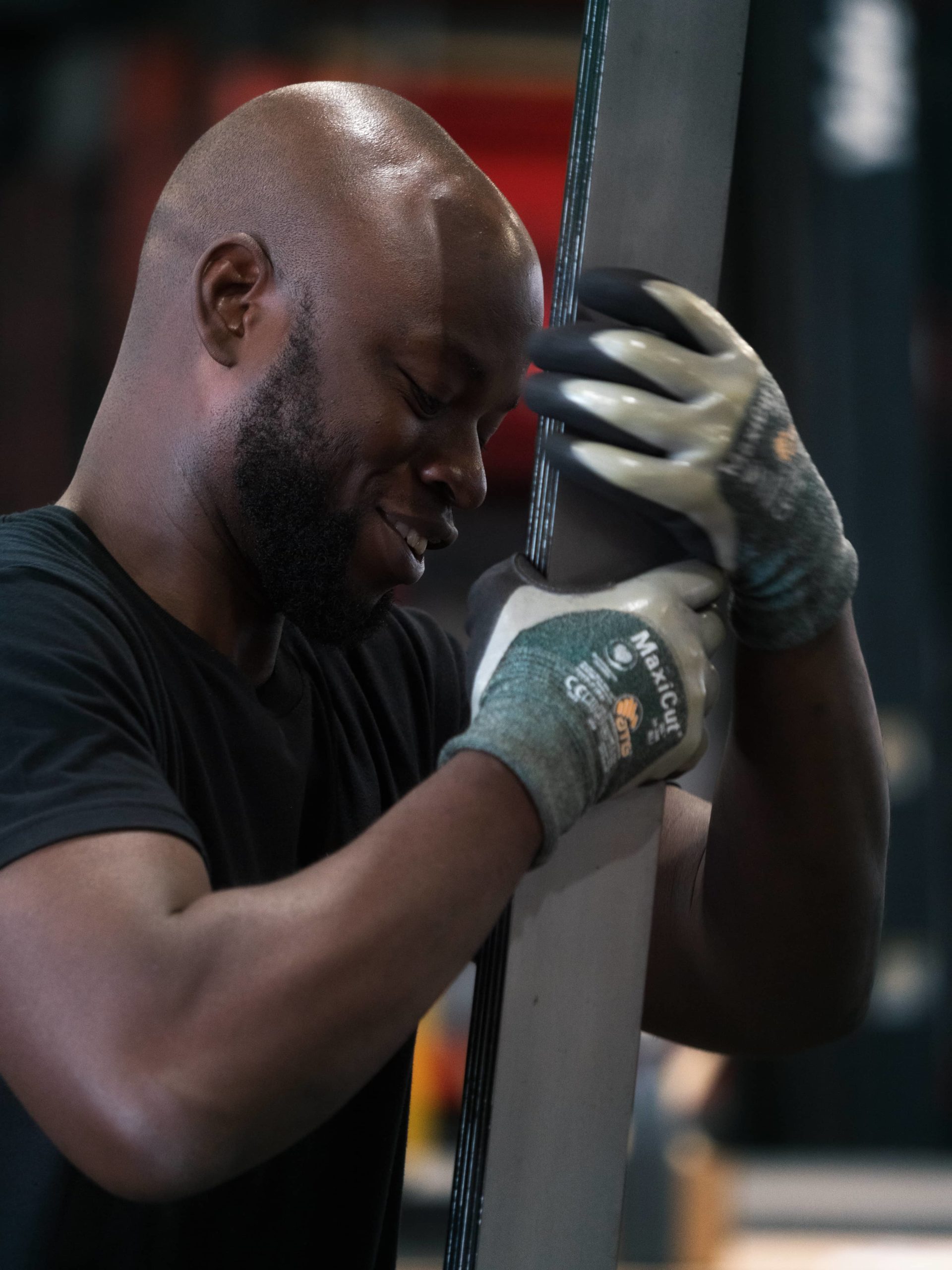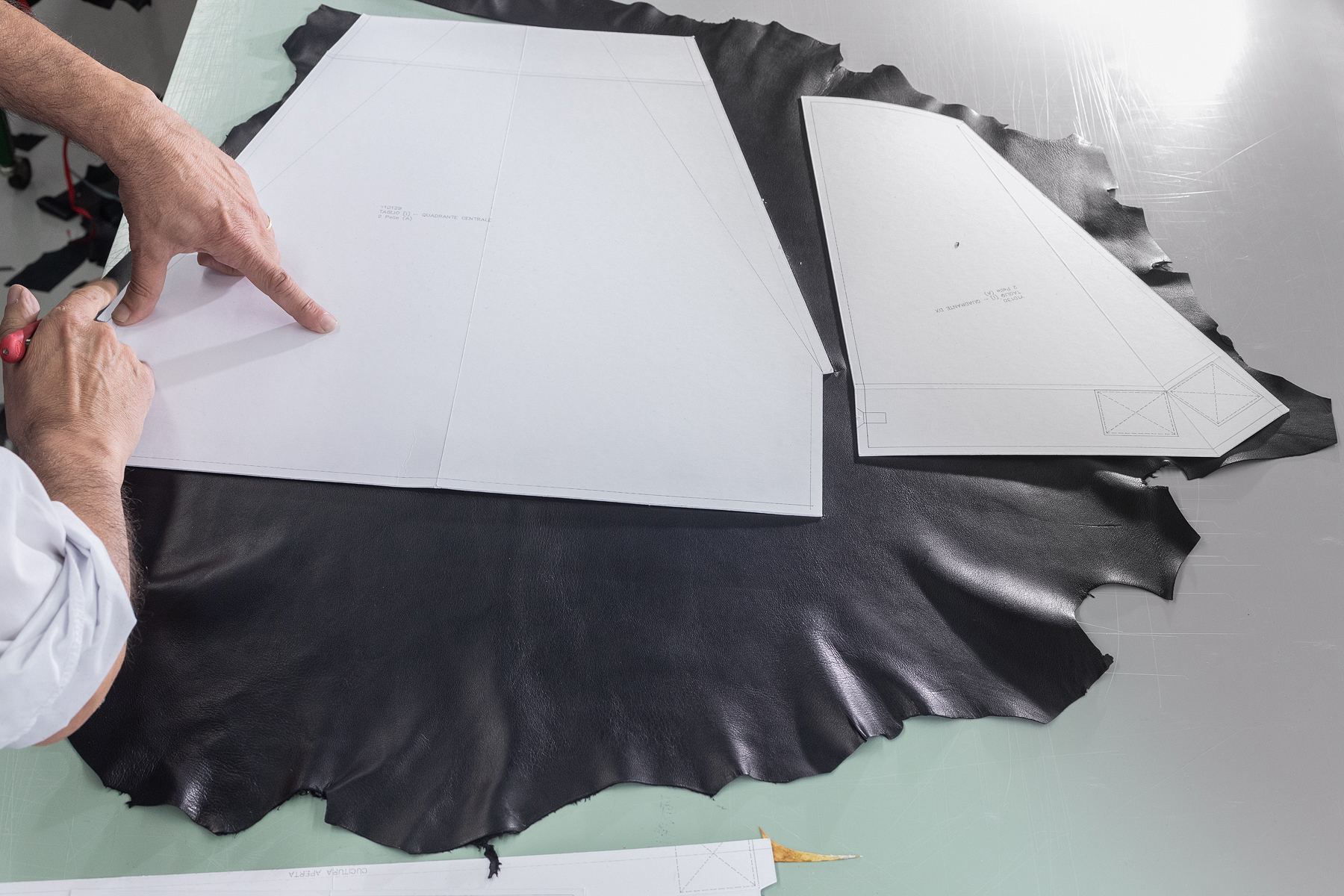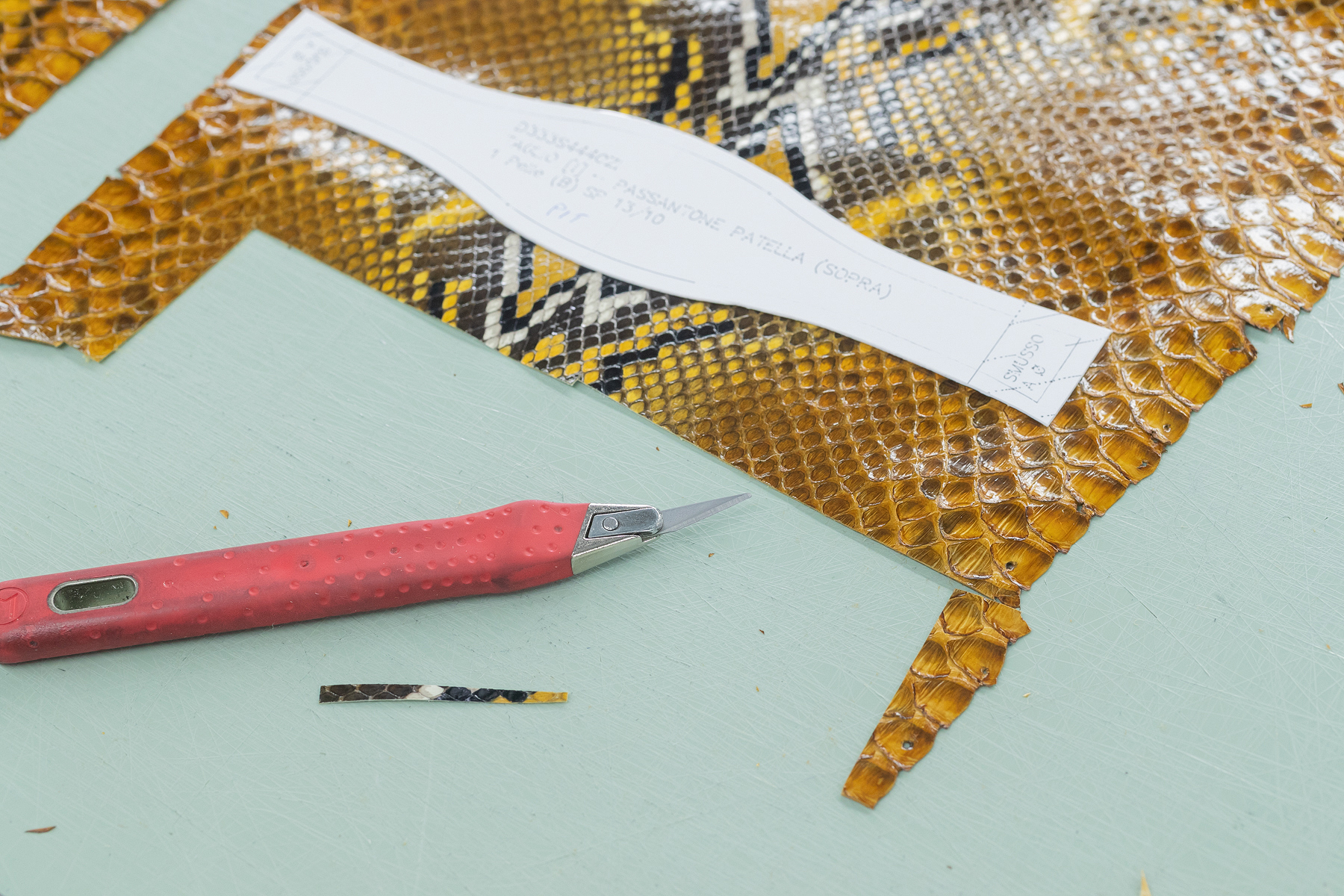The word 'taglio' holds a rather special place in the Italian language, meaning 'cut' or 'slice.' You might, for instance, know it from delicious 'pizza al taglio,' where every piece is a perfect slice, ready for you to enjoy. This popular way of serving pizza, by the slice, is a very familiar sight in places like Rome, Italy, and has even found its way to spots in New York and Detroit, as a matter of fact. It’s a concept that speaks to convenience and a certain kind of exactness, where each portion is just right.
But there's another kind of 'taglio' that is, in a way, making incredible cuts in a whole different manner: `taglio laser`. This term refers to a very modern way of shaping materials, using a focused beam of light to make incredibly precise cuts. It's a technology that has really changed how many things are made, from tiny little parts for machines to big, beautiful pieces of art. You see, it takes the idea of a 'cut' to a whole new level of exactness.
So, whether you are thinking about a tasty slice of pizza or a super exact cut in metal, the word 'taglio' brings to mind something specific and well-defined. In this article, we're going to talk all about `taglio laser`, what it is, how it works, and why it's such an important tool in today's world. It's a process that allows for amazing creativity and efficiency, helping people bring their ideas to life with remarkable accuracy.
Table of Contents
- What Exactly is Taglio Laser?
- Why Taglio Laser Matters: The Big Benefits
- Common Uses for Taglio Laser
- Different Kinds of Taglio Laser Systems
- Choosing a Taglio Laser Service or Machine
- Safety First with Taglio Laser
- Frequently Asked Questions About Taglio Laser
- The Future of Taglio Laser
- Bringing Your Ideas to Life with Taglio Laser
What Exactly is Taglio Laser?
The Core Idea of Laser Cutting
When we talk about `taglio laser`, we are talking about a way of shaping materials that is, quite frankly, incredibly exact. It's like having a very, very steady hand, but one that can work at super speeds. You see, even the smallest details, the tiny little bits, come out just right. This level of exactness means that what you design on a computer screen can appear in the real world almost perfectly, without any wobble or rough edges. It's a rather satisfying thing to witness, really, how cleanly the laser moves.
At its heart, `taglio laser` uses a highly focused beam of light. This light beam is so concentrated that it can melt, burn, or vaporize material in its path. It's a bit like using a very powerful magnifying glass to focus sunlight, but on a much, much smaller and more controlled scale. This focused energy is what allows the machine to make such clean and precise cuts, leaving a smooth edge behind. It’s a pretty clever way to get things done, if you ask me.
This method of cutting is often preferred over older ways, like using saw blades or punches. Why? Well, for one thing, there's no physical contact between the cutting tool and the material. This means less wear and tear on the tools themselves, and it also means less chance of the material getting bent or damaged during the cutting process. It's a gentle yet powerful approach, which is actually quite remarkable. So, in a way, it’s a cleaner and often safer option for many tasks.
How Does a Laser Make a Cut?
To understand how `taglio laser` works, picture a machine that creates a very intense beam of light. This beam, you know, gets sent through a series of mirrors and lenses. These mirrors and lenses work together to guide the light and make it incredibly focused, almost like a tiny, super-hot point. This concentrated spot of light is then directed onto the material that needs to be cut. It's a very precise dance of light and optics, you might say.
Once the focused laser beam hits the material, its intense energy causes the material to heat up very, very quickly. Depending on the material and the laser's power, the material will either melt, burn away, or turn into a gas. This happens so fast that the surrounding material hardly gets hot at all. A little bit of gas, often called 'assist gas,' like oxygen or nitrogen, is usually blown onto the cut area to help clear away the melted or vaporized material and keep the cut clean. This also helps to cool the area down, too it's almost like magic.
The entire process is controlled by a computer. Someone designs the shape they want to cut using special software, and then this design tells the laser exactly where to go and how fast to move. This means that very intricate designs, even those with tiny curves or sharp corners, can be made with great accuracy. It's a rather automated way of working, which makes it very efficient for making many identical parts. So, you see, it’s quite a smart way to manufacture.
Why Taglio Laser Matters: The Big Benefits
Unmatched Precision
One of the biggest reasons people choose `taglio laser` is for its incredible exactness. When you need parts that fit together perfectly, or designs with very fine details, this method truly shines. The laser beam itself is very thin, allowing for cuts that are much finer than what you can get with traditional tools. This means that even the smallest features, like tiny holes or thin lines, can be made with remarkable accuracy. It's a level of detail that’s hard to beat, honestly.
This exactness also means that there's very little room for error. Once the design is set in the computer, the laser follows it precisely every single time. This consistency is very important for making many identical parts, like those used in electronics or medical devices. You can rely on the fact that each piece will be just like the last, which is, you know, a huge advantage in manufacturing. It really helps keep quality high.
Speed and Efficiency
Beyond being super exact, `taglio laser` is also very quick. The laser can move at high speeds, making cuts much faster than many other methods. This speed means that more parts can be made in less time, which is, as a matter of fact, a big plus for businesses that need to produce things quickly. It helps to keep production lines moving smoothly and efficiently, too it's almost like a super-fast crafting machine.
Because it's controlled by a computer, the process is also very efficient. There's less need for someone to constantly watch over the machine or make manual adjustments. Once the job starts, the laser just keeps going, following the programmed path. This saves time and effort, and it also means that machines can run for longer periods without needing a break. So, in a way, it makes the whole operation more streamlined and productive.
Working with Many Materials
Another great thing about `taglio laser` is how many different kinds of materials it can work with. It's not just for metal, you know. Lasers can cut through wood, acrylic, fabric, paper, and even some types of plastic. This versatility means that `taglio laser` is useful in a huge range of industries and for many different projects. From making custom signs to intricate parts for machines, it's quite a flexible tool.
For example, you might see `taglio laser` used to make parts for cars, or to create beautiful wooden decorations. It's also used in the fashion world to cut patterns in fabric with great exactness, or to make delicate designs in paper for invitations. The ability to work with so many different substances makes `taglio laser` a very valuable asset for designers and manufacturers alike. It really opens up a lot of possibilities, honestly.
Less Material Waste
When you use `taglio laser`, there's typically less material that gets thrown away. Because the laser beam is so thin and precise, it can cut parts very close together on a sheet of material. This is often called "nesting," and it helps to use as much of the original material as possible, reducing scraps. This is good for the environment, and it also saves money on materials, which is a big deal for businesses, you know.
Traditional cutting methods, like punching or sawing, can sometimes leave more waste or require larger gaps between parts. But with `taglio laser`, the cuts are so fine that you can pack designs very tightly. This efficient use of resources is a significant benefit, especially when working with expensive materials. It's a rather smart way to make the most of what you have, which is pretty clever.
Freedom for Design
For anyone who likes to create, `taglio laser` offers a lot of freedom. Because the cuts are controlled by a computer, you can make almost any shape you can imagine. This means very complex designs, intricate patterns, and even personalized items are all possible. If you can draw it on a computer, there's a good chance a laser can cut it. It really lets your creativity run wild, honestly.
This design freedom is why `taglio laser` is so popular with artists, product designers, and people who like to make things as a hobby. It allows them to bring very specific visions to life without being limited by traditional tools. So, you know, it’s a tool that empowers innovation and custom creation, which is a wonderful thing.
Common Uses for Taglio Laser
Making Things in Industry
In big factories and workshops, `taglio laser` is a very common sight. It's used to make parts for cars, planes, and even big machines. The exactness and speed mean that thousands of identical parts can be made quickly and reliably. This is, you know, essential for mass production where consistency is key. It helps keep the wheels of industry turning smoothly, you might say.
For instance, many metal components that go into appliances, electronic devices, or even building structures are shaped using `taglio laser`. The ability to cut thick metal sheets with such exactness makes it a go-to method for many manufacturers. It’s a pretty fundamental tool in modern production, as a matter of fact.
Art and Creative Projects
Artists and craftspeople also love `taglio laser`. They use it to create amazing sculptures, intricate jewelry, and detailed wall art. Because it can cut so many different materials and make such fine details, it opens up new ways for artists to express themselves. You can make very delicate lace-like patterns in wood or acrylic, for example. It’s a tool that really brings artistic visions to life, honestly.
From custom signs for businesses to personalized gifts, the possibilities are almost endless. People use `taglio laser` to etch designs onto glass, cut out precise shapes for fabric projects, or even make unique pieces of furniture. It’s a very versatile tool for anyone with a creative spark, you know, allowing for truly unique creations.
Prototypes and Quick Ideas
When someone has a new idea for a product, they often need to make a test version, called a prototype. `Taglio laser` is perfect for this. It can quickly cut out the parts needed for a prototype, allowing designers to see if their idea works in the real world. This saves a lot of time and money in the early stages of developing something new. It’s a very quick way to go from an idea to a physical object, you might say.
If a design needs a little change, the laser can quickly cut a new version. This fast turnaround helps people experiment and improve their ideas much more quickly than with older methods. So, in a way, it speeds up the whole invention process, which is pretty neat. Learn more about prototyping on our site, for example.
Signs and Displays
Look around, and you’ll likely see signs or displays that were made with `taglio laser`. The exactness of the cuts means that letters and logos look very crisp and professional. Whether it's a metal sign for a shop, an acrylic display for a museum, or wooden letters for a home, `taglio laser` helps make them look sharp and clean. It really helps things stand out, you know.
This method is also great for making custom stencils or intricate patterns that can be used for painting or decorating. The ability to make very precise shapes means that signs and displays can have a very high-quality finish, which is important for making a good impression. It’s a very popular choice for visual communication, as a matter of fact.
Different Kinds of Taglio Laser Systems
CO2 Lasers
One of the most common types of `taglio laser` machines uses CO2 gas to create the laser beam. These machines are very good at cutting and engraving non-metal materials. Think of things like wood, acrylic, paper, fabric, leather, and even some plastics. They are, you know, very versatile for many creative and industrial uses where metal isn't the main material. You'll find them in many workshops and small businesses, too it's almost a standard.
CO2 lasers are known for their ability to make very clean cuts on these materials, and they can also engrave surfaces with great detail. This makes them a popular choice for making custom products, artistic pieces, and even prototypes from softer materials. They are a pretty reliable workhorse for many different tasks, honestly.
Fiber Lasers
Fiber lasers are another important type of `taglio laser` system, and they are especially good at cutting metals. These lasers use optical fibers, similar to those used in internet cables, to create and deliver the laser beam. They are very powerful and can cut through thick sheets of steel, aluminum, and other metals with great speed and exactness. They are, as a matter of fact, often used in heavy industry for making strong parts.
Because of their power and ability to cut reflective metals, fiber lasers are often found in manufacturing settings where metal fabrication is key. They are also very efficient with energy, which can save on operating costs over time. So, in a way, they are a very strong and economical choice for metalworking, which is pretty significant.
Other Laser Types
While CO2 and fiber lasers are the most common for `taglio laser`, there are other types too, each with its own special uses. For example, Nd:YAG lasers are sometimes used for very specific tasks, like marking or engraving, or for cutting very thin metals with very fine detail. These lasers have different wavelengths of light, which makes them better suited for certain materials or applications. It's a bit like having different kinds of brushes for different types of painting, you know.
The world of laser technology is always growing, with new types of lasers being developed for even more specific jobs. This means that the possibilities for `taglio laser` are always expanding, allowing for even more precise and specialized cutting in the future. It's a very dynamic field, honestly, with constant improvements.
Choosing a Taglio Laser Service or Machine
What Materials Do You Need to Cut?
If you're thinking about using `taglio laser`, the first thing to consider is what materials you want to cut. Are you working with wood and acrylic for art projects? Or do you need to cut thick sheets of steel for industrial parts? As we discussed, different types of lasers are better for different materials. So, you know, knowing your material is a very important first step. It really guides your choice.
Making sure the laser system you choose



Detail Author:
- Name : Shanelle Sporer
- Username : florian.nader
- Email : garland.runolfsson@yahoo.com
- Birthdate : 2005-05-10
- Address : 5026 Ellen Highway Apt. 739 Damienport, LA 51239-3018
- Phone : (443) 512-0761
- Company : Marks, Hegmann and Armstrong
- Job : Economics Teacher
- Bio : Eveniet nihil voluptas architecto nihil et sit. Harum nobis quae iure.
Socials
linkedin:
- url : https://linkedin.com/in/arliebartell
- username : arliebartell
- bio : Qui corporis officia aut provident.
- followers : 3640
- following : 2307
facebook:
- url : https://facebook.com/arlie9731
- username : arlie9731
- bio : Molestias necessitatibus sapiente expedita in ut qui quasi.
- followers : 5842
- following : 2845
tiktok:
- url : https://tiktok.com/@arlie_dev
- username : arlie_dev
- bio : Ipsam quam iste cumque eius aut. Dolores itaque eum vel nam ratione.
- followers : 3396
- following : 1668